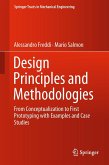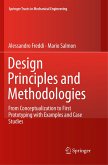This book reveals how a generative design process capitalizes on understanding humans in context to deliver appropriate innovation. A repertoire of design actions and output allows designers to work dynamically in order to create a cascade of new ideas and insights. The Design Matrix, a visual team tool, provides a prescriptive and descriptive guide enabling a range of users to work through a problem and also reflect on past decisions. Several case studies from prior industry collaborative projects show the complexities and tensions that can be tackled through the design process and matrix.
Case studies include design and engineering development and production of an 8 Tesla MRI, biomedical projects, medical devices, and consumer products. Other cases with Ford Motor Company and Cognizant Technologies illustrate how using a human-centered design process can shift the business paradigm for new products, services, systems, and social innovations. Each story shows different and distinct aspects that span classic design and engineering problem solving to generative contextual processes which lead to innovative solutions.
Describes a studio-based product development pedagogy so readers can understand through past examples how to operationalize their own design, engineering, and innovation processes;
Provides specific stories that showcase details of the project work, the contextual insights, and proposed solutions as a result of applying tangible visualizations, collaborative work methods, and framing and reframing of the problem;Uses case studies to demonstrate how to use divergent and convergent design thinking and actions from multiple stages of the design process so this can lead to critical team integration and new contextual insights.
Case studies include design and engineering development and production of an 8 Tesla MRI, biomedical projects, medical devices, and consumer products. Other cases with Ford Motor Company and Cognizant Technologies illustrate how using a human-centered design process can shift the business paradigm for new products, services, systems, and social innovations. Each story shows different and distinct aspects that span classic design and engineering problem solving to generative contextual processes which lead to innovative solutions.
Describes a studio-based product development pedagogy so readers can understand through past examples how to operationalize their own design, engineering, and innovation processes;
Provides specific stories that showcase details of the project work, the contextual insights, and proposed solutions as a result of applying tangible visualizations, collaborative work methods, and framing and reframing of the problem;Uses case studies to demonstrate how to use divergent and convergent design thinking and actions from multiple stages of the design process so this can lead to critical team integration and new contextual insights.








